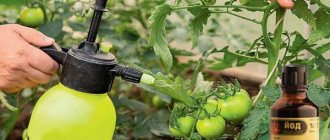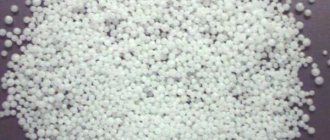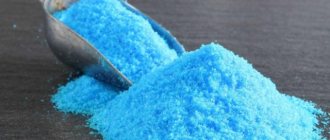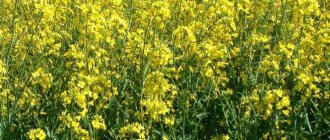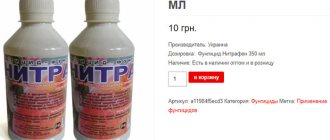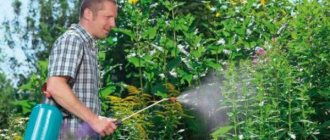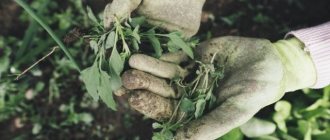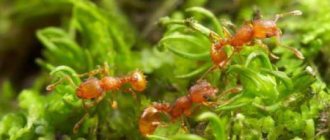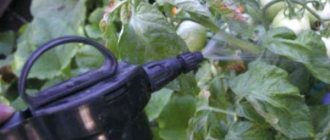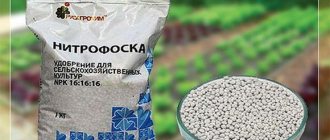Folk remedies for pests and diseases
Many plant products, such as onion skins or water from boiled potatoes, which we usually recycle, can be an excellent flower food. What types of organic matter are suitable for fertilizer. Also, most wild plants can become healers for their indoor relatives. And the benefits of garlic in pest control are legendary!
Important to know: Pests of indoor flowers: photos, signs and methods of control. Garden pests: photos and prevention. Diseases of indoor plants: photos, symptoms, treatment.
Reviews
Let's find out what our gardeners say about the use of laundry soap in the fight against aphids.
- Olga, Zelenograd: “At my summer cottage, I try to use natural fertilizers and insect killers too. Nowadays there is so much artificial stuff around that we want to at least provide our family with completely natural products. I most often use laundry soap as a remedy against aphids. It helps effectively, but it is important not to start the reproduction of insects, and to fight them in the early stages.”
- Mikhail, Nizhny Novgorod: “You need to fight aphids using all possible methods - for me this problem is relevant every spring. I use both insecticides and biological products, and when the aphids just start to fly in, I spray the bushes with a solution of laundry soap. I note that if you treat with soap in a timely manner, then aggressive chemicals may not be needed.”
Citrus peels
Dried citrus peels repel many insects! They can be placed in a moth closet, as well as in flower pots to combat midges and fools. The peels of any citrus fruit are suitable for this - lemon, orange, tangerine, lime, grapefruit. Spread them on the surface of the soil, or chop them and sprinkle them on the soil in a flower pot. It is better to do this the next day after watering, or 4-5 days before watering.
To combat more serious pests - aphids, scale insects and mealybugs, you can also spray the citrus peel with an infusion. For this, 100 gr. dry or fresh raw materials, pour a liter of warm water and leave in a dark place for 4 days.
citrus peels and garlic
How to dilute soap for spraying?
Standard
To prepare the correct solution of laundry soap, which is guaranteed to be able to destroy aphids, you must follow simple but mandatory requirements. Let's take a closer look at them.
First of all, to prepare the solution, you need to grate 300 grams of soap - 75% - on a coarse grater. Pour the resulting soap shavings into a bucket and add two liters of warm water to dissolve the soap. Stir. When you have a concentrated composition with completely dissolved soap, dilute it with 8 liters of cold water. Mix everything thoroughly too. After the solution settles, it should become transparent, without any solid fractions or thick sediment.
From liquid soap
In addition to bar soap, you can also use its liquid analogue. In the same way, liquid laundry soap is dissolved in water, but in the following proportion: for a 10-liter bucket you need to take 125 ml of product.
Garlic and onion
An infusion of garlic will help cope with whiteflies, scale insects, and mites. To do this, pour boiling water over chopped garlic at the rate of 1 head per liter of water. The “potion” steeped for 7 days is used for spraying. For 10 l. Only 50 ml of water is enough. such a solution.
Garlic infusion helps with many “plant” diseases - spotting, rust, late blight. Moreover, garlic can be used together with the husk, or you can infuse only the husk at the rate of 100 grams. husks per 10 l. water (keep for 24 hours).
Onions have a similar effect; their smell repels aphids, thrips, other sucking pests and mites, and is also a preventive measure against bacterial and fungal diseases. Fresh onions are grated or crushed in a blender and filled with water in a 1:1 ratio. The “fragrant” mixture is left in a closed jar for 8 days, then used for spraying at the rate of 20 ml. infusion for 10 l. water.
✿
What plants is it suitable for?
A soap solution against aphids is universal and helps get rid of pests on any plants. If regular soap is not available, you can get rid of aphids by applying tar soap to the plants.
Fruit trees
Aphids suck sap from tree leaves, spoil shoots and leave behind a substance that attracts other harmful insects. As a result, the foliage of fruit trees turns yellow and then dies. As a result, the yield level decreases. The plant becomes vulnerable to diseases and fungi.
To remove aphids, you need to use soap in solid or liquid form. First you need to grate the soap on a coarse grater. After this, you need to dilute 1 liter of warmed water. The required amount of soap is added to it.
This product covers the leaves with a film that makes it difficult for insects to move. In addition, laundry soap reduces the risk of plant disease.
Rose
Usually in the spring, aphids appear on rose bushes. It damages the stems and peduncle, sucking the juice from it. As a result, the rose dries out, its leaves curl and are affected by fungus. The bush dies.
To prevent this, you need to use soap. For a liter of warm water, take 50 grams of solid and 2 teaspoons of liquid. Every evening you need to spray the stems and foliage of the rose, after two weeks the pest will disappear from the flower.
cucumbers
Aphids on cucumbers cause their death in just a couple of days. Plant leaves turn yellow and fall off, and ovaries do not form. Therefore, you need to use means that will prevent this.
A mixture of ash and soap helps insects stick to the stem and leaves. To create a solution, you need to mix 200 grams of ash and 50 grams of soap per 10 liters of warm water. Stir the mixture and sprinkle it on the cucumber shoots.
Currant
The harmful insect damages the bush, reducing productivity and spoiling the inflorescences. A soap solution will help you cope with aphids on currants. This component interferes with the feeding of aphids, making it difficult for them to move.
You can use soap in both liquid and solid form. To protect the currant bush, you need to dilute 300 grams of the product in 10 liters of boiled water. After this, you need to spray the plant several times a day.
Pepper
The insect appears on peppers due to the juicy fruits of the plant. After the aphids appear, the pepper leaves will begin to wither and deteriorate. As a result, the plant may not produce a harvest at all.
A soap solution will help exterminate the harmful insect. You need to dilute 5 grams of product per 1 liter of water. After this, the solution should be infused for 5 hours. When the deadline is up, you can spray the plant bush. In order for aphids to completely disappear from peppers, you need to spray the bushes 3-4 times.
Cabbage
After the appearance of aphids on the cabbage, various harmful microorganisms begin to multiply - rot, fungi, mold. Soap will not only drive away insects, but also restore leaves. You need to dilute 100 grams of the product in 1 liter of water at room temperature. After thorough mixing, you need to add another 9 liters of water, but this time cold. Next, the head of cabbage is sprayed.
Effective ways to treat cabbage against aphids at home
Kalina
Adult aphids suck the juices from the plant, causing the leaves to curl and become spotted. Insects damage flowers and young shoots. You need to use laundry soap in combination with wood ash to finally get rid of pests.
200 grams of ash and 50 grams of grated soap are added to the water. Everything is mixed and infused for an hour. You need to spray the viburnum with the prepared solution every day.
Aphids on viburnum: other pest control measures
Dill
Aphids appear on the plant in June. As a result, the greenery does not grow, turns yellow, and mucus appears on it. Soap combined with garlic will help get rid of pests. For a liter of water you need to add 1 cup of crushed cloves and 200 grams of soap. It is necessary to mix the mixture and leave for 24 hours in a closed container.
Raspberries
If aphids appear on a raspberry, the plant will stop growing, its inflorescences will fall off, and the leaves will turn yellow. To prevent this from happening, you need to use a soap mixture. It is necessary to grate the product and mix with water until a soap mass is formed. You can spray the bush with the resulting solution.
Houseplants
The presence of insects can be determined by the type of plant. If it does not grow, the leaves dry out and the buds fall off, it means that aphids have settled on it.
Important! To see aphids, you need to turn over a leaf of a bush and inspect it. Insects usually cluster in small masses. If such clusters exist, these are aphids that harm the bush.
To remove pests, you need to dissolve 50 grams of laundry soap in a liter of water.
Green and laundry soap
Pests leave invisible traces, which subsequently become soil for the development of fungal diseases. Therefore, a soap shower is a useful procedure in the initial stages of fighting insects! Using a soft sponge, wipe the leaves and stems of the plant with a soapy solution and then rinse with hot water. A solution of laundry soap in its pure form is used to combat aphids, mealybugs, mites, and scale insects. For this purpose, 200 gr. soap (can be grated) dissolved in 10 liters. clean hot water and use for spraying.
Laundry soap is also used to increase the viscosity of medicinal infusions and insecticides. So that the solution settles on the leaves and is better absorbed, and does not drain from them, rub a little soap into the finished infusion.
Among natural preparations, green soap has received recognition - a herbal remedy based on oils, which can be purchased at any specialized store. The spectrum of its effects includes: aphids, scale insects, mites, scale insects, powdery mildew, rot, spotting, and late blight. Directions for use and dosage are indicated on the packaging. This drug is good because it is completely harmless to people, animals and beneficial insects.
tobacco and laundry soap
Baking soda
Baking soda against aphids is a time-tested method known to many. The advantage lies in its simplicity and accessibility. 75 g of baking soda is poured into 10 liters of water. and vegetable bushes are sprayed with this solution
If this method does not help you completely remove aphids, it certainly will not harm your farm. It is known that soda helps to get rid of and prevent rot in fruit trees , and powdery mildew in cucumbers.
The frequency of use, as with the previous method, is determined by yourself. Read on about garlic against aphids.
Shag tobacco and ash
Tobacco and ash are used to remove gnawing and sucking insects: aphids, mites, thrips, beetles, caterpillars, worms, etc. They also get rid of flower midges. But pure tobacco is suitable for plants, without impurities and flavorings, preferably as strong as possible! Moreover, fresh raw materials will also work – tobacco leaves, or shag leaves, and even tobacco dust. An infusion is made on them: pour hot water (at the rate of 1:10) and leave for a day. The finished solution is diluted with water 2 times, for greater viscosity, laundry soap is added - 40 g. for 10 l. The resulting mixture is thoroughly sprayed onto the plants.
A similar recipe works for wood ash. However, it is worth considering that the raw materials for medicinal ash should be exclusively clean materials - paper, wood. You can lightly sprinkle the soil of potted flowers with dry tobacco and ash. This folk remedy for plant protection repels insects, including midges. Among other things, ash is a valuable fertilizer; the flowery-blog.ru website talked about its use in this article.
Green soap
Green soap for aphids is widely used in gardening. In addition to protecting trees and preventing plant diseases, green soap is effective in getting rid of or preventing the appearance of sucking aphids.
How to prepare a soap solution for aphids? You can prepare a solution at the rate of 200-300 grams per 10 liters of water or prepare a mixture using 20 grams of mustard powder, 200 grams of Green soap and 9 liters of water. While stirring the prepared solution, pour copper sulfate (20 g per 1 l) into it.
Experts advise treating plants during their active growth no more than 3 times per season. Soap solution against aphids is an excellent method of pest control.
Potassium permanganate, furatsilin and soda
Manganese, as a trace element, is necessary for flowers (what other trace elements are important for plants). It improves growth, increases defenses, strengthens the root system! Plants are watered with a weak solution of potassium permanganate, together with the solution they receive a useful element, and soil pests (root scale insects, caterpillars, beetles) receive a dose of poison. At the same time, this procedure disinfects the soil for fungi and bacteria that cause diseases of the root system. However, in order not to burn the roots of the plant, the manganese solution should be made barely pink, literally a few specks per 10 liters. water! It is easier to add a few drops of a pre-diluted manganese solution to the water for irrigation. Flowers are also sprayed with this solution against aphids, mites, and whiteflies.
✿
Ash
Wood ash is not only a universal fertilizer , but also a good remedy for aphids. In this case, an ash solution is used. For it, you need to boil 300 g of sifted ash for 25 minutes, then strain and pour in 10 liters of water.
When apple aphids appear on your trees, you can “powder” the leaves by first moistening them for better adhesion.
Following the opinion of experts, aphid ash is also the best remedy for preventing the appearance of aphids.
Ash contains a large percentage of potassium , so by adding it to the soil and increasing the potassium ratio, you automatically eliminate excess nitrogen, which is one of the main reasons for the appearance of aphids. The required dose for an adult tree is 5 kg per year. Ash against aphids will be an effective method of killing insects.
Infusions and decoctions: celandine, dandelion, horsetail, nettle, wormwood, comfrey
Nettle is an excellent immunomodulator for decorative flowers. This wild-growing medicine can be used as a regular feeding! The infusion is poured under the root and sprayed with it to prevent almost all diseases and pests. To prepare the infusion 700 gr. pour 5 liters of fresh herbs. hot water, cover and leave in a warm place. After a while, the solution will begin to ferment; it must be stirred regularly. Of course, it is easier to prepare such a “potion” at the dacha, or in your own home. After all, the smell is quite pronounced! The fermented mixture (usually on day 5) can be filtered and used. For root feeding, the infusion is diluted 1:10 with water, and for foliar feeding - 1:20.
In the same way, in the summer, an infusion of comfrey, horsetail, or wormwood herbs is prepared. Comfrey infusion can replace complex fertilizer in composition: it is a valuable source of potassium and nitrogen. Wormwood also improves the immunity of flowers and is an excellent help in the fight against bacterial diseases, aphids, leaf-eating and sucking insects. Horsetail is used to prevent diseases and pests. It strengthens plant tissues and increases the immunity of flowers!
horsetail and wormwood
nettle and comfrey
Attention! It is better to spray in the evening to avoid the sun hitting the leaves. Recipes for healthy leafy subcortex.
Such folk remedies for plants can also be used in dry form at the rate of 150 g. dry raw materials per 10 liters. water. Infuse the herb in cold water for 24 hours, then bring to a boil in a water bath. This infusion is not diluted; it is used in its pure form for watering and spraying.
Among plants, celandine and dandelion are also famous for mutual assistance! Infusion of celandine is sprayed or wiped off plants from scale insects, mealybugs and thrips. For this, 100 gr. dry herbs are poured with a liter of boiling water and infused for 2 days. The properties of dandelion are similar, plus it neutralizes ticks! It is better to use fresh raw materials - 50g. leaves and roots pour 1 liter. hot water and leave for 5 hours, after which it can be used for sheet processing.
✿
Additional Recipes
In addition to the above methods, there are other folk recipes that also help destroy insects.
With wood ash
Wood ash can also be used with soap, which adds effectiveness in the fight against aphids. You can make a solution with these substances by following these steps:
- The ash is sifted through a sieve. This separates large elements that are not needed in the solution. In total you need to prepare 300 grams.
- Fill a metal container with 10 liters of water, pour ash into it and place it on the stove.
- Bring the solution to a boil, then cook for 30 minutes.
- Cool the resulting liquid and stir 40 grams of grated soap into it.
Important! Ash and soap against aphids are not used when plants form flowers. Getting the ash solution on the buds will repel pollinating insects. Those plants that are in the period of peduncle formation should be sprayed with soap foam.
With baking soda
To prepare this remedy, you must do the following:
- Take a tablespoon of soda, preferably with a heap, and a quarter of solid soap, which you need to grate on a coarse grater.
- Mix the ingredients and place them in a metal container. Pour a liter of boiling water.
- Stir until a homogeneous mass is obtained.
- Dilute the solution with cold water. After this, you can start using the product.
Tobacco
Aphids and many other pests do not tolerate strong-smelling substances. That is why adding tobacco to the aphid mixture will bring additional benefits - it will rid the bushes of caterpillars and mites. To properly make a concentrate, you must perform the following steps:
- Take 200 grams of dry tobacco. Grind the ingredient into a fine substance and add to a bucket of previously prepared boiled water.
- Pour the grated soap into the same container and stir the substance.
- To enhance the effect, you can add hot pepper to the solution.
With tomato or potato tops
This recipe is also used by gardeners in the fight against harmful insects. By following the instructions, you can prepare the product correctly.
- Finely chop 4 kg of potato or tomato tops. Place it in a metal container.
- Pour 10 liters of water into the raw material and let it brew for 4-6 hours.
- After this time, put the solution on the fire and bring it to a boil.
- Add 50 grams of grated solid soap to the resulting mixture. Mix everything and strain.
Oil
When using this method, you need to take vegetable oil and laundry soap in equal proportions:
- A glass of oil and a glass of grated soap are added to a bucket of water.
- The substances are mixed and beaten until the soap is completely dissolved.
- After this, you can use the mixture to spray plants or feed the soil.
The usefulness of the oil lies in keeping the solution on the leaves for a long time. Therefore, the effectiveness and service life of the aphid repellent increases significantly.
Pine extract
This component is sold in salt or powder form. Many gardeners use it, as it is a proven and safe substance for plants. You can prepare the solution by following the rules:
- Dilute 4 tablespoons of concentrate in a bucket of water.
- Add grated soap to the container and stir the mixture.
- Let the liquid sit for 30-40 minutes. After this, you can start spraying.
Attention! You can spray plants with a soap-based solution only after pre-cooling the substance.
Fragrant flowers: lavender, gypsophila, nasturtium, mateola, spices, marigold and calendula
There are plants that, when adjacent to other flowers, are able to create a barrier against pests and diseases. These are the so-called phytoncide plants! These include gypsophila, lavender, matiola bicornuum, nasturtium, as well as spicy aromatic herbs - basil, coriander, mint, sage, thyme, lemon balm, even the usual dill and parsley, as well as the previously mentioned wormwood.
Why not grow a small garden, or a fragrant mini-vegetable garden on the balcony? The smell of such plants will repel pests. Thus, once on the balcony, indoor flowers will be protected by natural flavors! And by planting aromatic plants and herbs in the garden plot, you will not only decorate the flowerbed, but also protect the flowers from the invasion of “uninvited guests”. Double benefit!
spices and matthiol
Some plants act not only above the ground, but also in the soil, protecting neighbors from parasites and bacteria. Such universal flowers include calendula and marigolds. By sowing the empty spaces in the flowerbed with them, you will protect the flowers from fungal and viral diseases. By the way, an infusion is also made from marigold flowers, which is successfully used in the fight against pests and diseases! To do this, collect faded marigolds along with the leaves, put them in a saucepan and fill them with hot water 1:1, let them brew for 2 days. The strained infusion can be used for spraying against aphids, mites, whiteflies, thrips, and for the treatment of fungal diseases. It will also be useful for seedlings – against “black leg”.
Onion peel
For urgent spraying, an infusion of onion peels is very suitable. It perfectly repels pests , so 1-2 procedures will quickly “survive” aphids from the beds.
The preparation recipe is very simple: 200 g of onion peel is poured with warm water (10 l) and infused for 12-15 hours, after which it is filtered and sprayed on the plants without diluting the infusion with water .
Onion peel against aphids goes well with other decoctions, infusions and fertilizers.
Potato tops
If you notice aphids, but you don’t have any means at hand to get rid of them, cultivated plants with insecticidal properties . One of these plants is potatoes.
Of course, it is at least unwise to use potato fruits, but the tops of this crop are quite capable of helping.
Potato tops against aphids. An infusion is made from it, which combines well with the use of other aphid remedies and is absolutely safe for humans.
The result of using an infusion of potato tops will appear after the first spraying. This infusion helps well in the initial stages of aphid emergence - when there are already a lot of pests, additional “medicines” may be required.
The preparation recipe is very simple - 1.5 kg of fresh or 0.8 kg of dry tops are infused in 10 liters of water for 3-4 days. After this, the plants are filtered and sprayed , paying special attention to the inside of the leaves. You can add 30-40 laundry soap to the resulting infusion for better adhesion. Potato tops against aphids will help gardeners get rid of insects.
Soap and soda solution
Soap and soda against aphids are indispensable helpers on fruit trees and bushes. Making a soap solution for aphids with soda is very simple: you need to mix one tablespoon of baking soda with a quarter of a grated bar of soap. Pour all this into one liter of hot water and stir. Cool the resulting mixture to room temperature and use it in processing plants.
Soap solution for aphids
Oil insecticide
To make the fight against aphids more effective, it is recommended to make a soap solution with the addition of oil. To do this, you will need to dissolve a glass of soap shavings or liquid soap and the same amount of vegetable oil in a bucket of water. This insecticide can be used to lather leaves and branches of trees.
Controlling aphids on plants
The oil plays the role of a binding component, which does not allow the soap mixture to drain from the plant and evaporate in the sun. And the protective oil film prevents insects from feasting on the leaves.
Aphid solution: aphids carry diseases
Aphids are indeed a very dangerous pest; they can carry many diseases and viruses that negatively affect the life and growth of plants. If an aphid brings the virus to a plant, hard growths will begin to form on its leaves. Aphid larvae are carried by ants from their homes to trees. A soap-containing solution will help you fight both ants and aphids.
Fighting caterpillars with soap
The caterpillars of numerous butterflies that attack our plots in the warm season often become a real disaster for the gardener. They devour lettuce, cabbage, root vegetables, berries and fruits and almost everything they encounter on their way. Some people collect them by hand, sparing no effort in searching for and destroying clutches, while others prefer folk recipes based on soap and herbal infusions.
The most common in the fight against caterpillars can be considered an infusion of chamomile (1 kg of leaves per 10 liters of water, 40-50 g of soap) and an infusion of tobacco leaves (400 g of dry leaves per 10 liters of water, 40-50 g of soap). This mixture stays on the plants for 7-10 days, after which the spraying must be repeated.
- Fighting caterpillars in the garden and vegetable garden - how to treat plants
The question of how to treat cabbage, roses, apple trees and other plants against caterpillars worries most gardeners. After all, these pests are not averse to eating not only green leaves. Caterpillars can even be found on pine and other conifers.
Recipes
Let's look at the most effective recipes for spray solutions with soap.
Ash-soapy
It is very effective to use wood ash along with laundry soap for pest control. To prepare the spray, sift the ash through a sieve to separate large fractions from the fine dispersion - they are not needed for the solution. A total of sifted finished ash powder will require 300 grams.
Place a metal bucket with 10 liters of water on the stove and pour ash into it. Bring the mixture to a boil, and after boiling, cook for another half hour. Then you need to cool the resulting brew (but not completely), and dissolve grated laundry soap in it in an amount of 40 grams.
This solution should not be used when plants are in flower. When ash gets on the delicate petals, they become unattractive, including to pollinating insects. It is better to treat flowering bushes and trees with clean soap foam.
Soap and soda composition
To prepare this product you need to take a tbsp. a spoonful of soda (heaped) and one-fourth of a standard piece of laundry soap (grated). Mix the substances, place in a metal ladle, and pour in a liter of boiling water.
Stir until smooth - this will be a concentrate. Then the resulting composition is diluted with a bucket of cold water and used for spraying plants.
Soap and tobacco solution
Aphids are known to dislike strong-smelling substances and plants. Tobacco is one of these plants. Adding tobacco to spray solutions is therefore very effective. To make the solution, you need to take 200 grams of dry tobacco (leaves or shag), grind it into dust, pour it into a bucket of water, and add a couple of pods of hot pepper for strength.
Oil solution
In this case, to prepare the damaging composition, use laundry soap and vegetable oil in equal parts. It is recommended to take a glass of oil and the same amount of soap shavings for a bucket of water.
All components should be mixed, beaten until the soap is completely dissolved, and then used to spray garden plants against aphids, as well as to nourish the soil. The oil helps the soap solution stay on the surface of the leaves for a longer period, as it protects it from fading in the sun and rolling off to the ground. As a result, processing efficiency increases.
With tomato tops
This remedy can also be used quite effectively to eliminate aphids in the garden. To prepare, you need to finely chop 4 kg of tomato tops (fresh) and place them in a metal bucket. Pour the plant material with ten liters of water and leave for 4-6 hours.
After infusion, the composition is boiled, bringing to a boil, and then for another half hour. Add 50 grams of grated soap to the resulting liquid, mix everything and filter.
What is an aphid?
This is a small sucking insect up to 22 mm in size. They come in green, red or black. Leaf and shoot aphids are always found in colonies, which is their main danger to plants. A few tiny creatures will not be able to cause significant harm. But hundreds and thousands of aphids suck the juices from fresh shoots, drying and destroying them. In addition, with its secretions it covers the stomata of the leaf, preventing it from breathing. Gardeners often use a soap solution against aphids, noting that this is a safe and effective way to control the pest.
Treating tools and containers with laundry soap
Many gardeners use the same containers for growing seedlings and germinating seeds for several years in a row. Usually they are rinsed with running water, however, if fungus or pathogenic bacteria settled in the container last year, this will not be enough.
But laundry soap is another matter. Wash (twice if necessary) your pots, cups, containers, tillers, planting plugs and other tools you use in the garden. Soap disinfects perfectly, and you already know where to throw out the soapy water.

